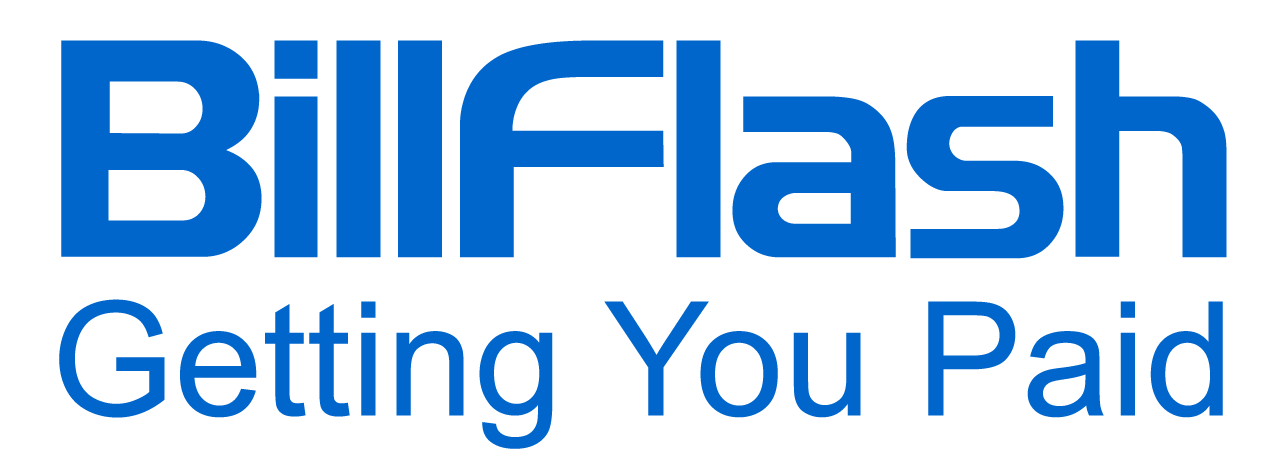Discover how price transparency in healthcare boosts patient trust, simplifies billing, and improves your practice's financial performance.
In today's healthcare market, price transparency is no longer optional; it is expected. Patients approach healthcare like consumers, demanding clear information about what they will owe before they get care. Evidence supports this shift: 89% of patients said knowing their bill amount in advance and paying before their visit would have made payment easy. However, 70% of patients report they didn't get a cost estimate or weren't sure if they did.
This gap between expectation and reality is costly: around one in four adults admit they have delayed or skipped needed care because of cost concerns. This is part of the reason regulators are pushing for greater transparency. For example, CMS now requires hospitals to post pricing online so potential patients can “shop and compare prices” before they walk in. The federal No Surprises Act also mandates that healthcare providers give uninsured or self-pay patients a Good Faith Estimate of charges ahead of care.
In this environment, medical practices that embrace price transparency can comply with the rules and meet patient demand. This improves patient trust and drives better financial performance.
Why Price Transparency in Healthcare Is No Longer Optional
With the rise of high-deductible health plans, patients are responsible for more medical costs. In 2021, the percentage of patient statements with balances over $7,500 grew from 5.2% in 2018 to 17.7%, highlighting the increasing financial burden on patients. High-deductible health plans (HDHPs) now cover 50% of privately insured Americans. This increased financial responsibility drives the need for clear information about potential costs.
Healthcare Consumerism
Imagine someone booking a flight or a hotel without knowing the price. It's probably a scenario you don't think will happen, so since it's unthinkable in other industries, healthcare consumers shouldn't have to live this scenario. For this reason, more patients are applying that same expectation to their healthcare. They are researching costs, comparing prices, and wanting real value. This mindset has been reinforced by studies showing price differences for the same services between medical practices, even within the same area. As noted in a White House fact sheet: “One patient in Wisconsin saved $1,095 by shopping for two tests between two hospitals located within 30 minutes of one another”. This shows the growing importance of price transparency in healthcare.

Regulatory Requirements
Federal regulations now mandate transparency from hospitals and health plans. From January 1, 2021, the Hospital Price Transparency rule requires all hospitals to post a machine-readable standard charges file for all items and services across all payers. Hospitals must also display actual prices or provide a price estimator tool for 300 shoppable services. In addition, the No Surprises Act, which went into effect on January 1, 2022, protects patients from unexpected balance billing and promotes better understanding of medical service costs. These regulations are being reinforced through executive actions, with recent orders directing departments to ensure hospitals and insurers “disclose actual prices, not estimates.”
The Risk of Unclear Billing
One key reason price transparency in healthcare is now essential is the direct link between billing practices and patient retention. Over 60% of patients say they would consider switching providers if they were dissatisfied with payment processes and cost discovery related to their care. With healthcare becoming more competitive, practices cannot afford to lose patients due to billing confusion or surprise charges.
The Link Between Transparency and Revenue Growth
Implementing price transparency in healthcare is not just about regulatory compliance. Being more transparent with pricing directly impacts your practice's financial health because it can improve your revenue cycle. How? Patients are more likely to pay their medical bills when they understand their financial responsibilities.
One survey found that over 75% of patients would pay their expected out-of-pocket charges before an appointment if it meant getting a guaranteed price. In a different study, providers reported that clear estimates boost collections. 88% of providers acknowledged that giving patients an upfront price estimate “contributes to collections success.”
Price transparency in healthcare also means fewer disputes and faster collections. Without surprises, there are fewer billing-related phone calls to answer and fewer delinquent accounts. On the other hand, confusing bills mean more delayed payments. The Experian Health report noted that “confusing bills, missed reminders, and affordability concerns often lead to delays” in patient payments. For example, when patients don't understand the charges, 69% of providers see patients postpone services or payments. To help avoid this, digital billing solutions like BillFlash PreBill allow practices to send detailed cost estimates before appointments via a secure link in text or email format for patients to review and pay online.
Implementing Pre-Visit Payment Strategies
Studies show that pre-visit payment strategies reduce no-show rates by increasing patient commitment while boosting cash collected upfront. Think of it this way: every no-show you can prevent is one more slot you can fill. Pre-visit billing strategies prepare patients financially and create opportunities to discuss flexible payment plans such as BillFlash FlexPay, which can make necessary care more accessible through manageable payment plans. These improvements lead to getting cash in the practice faster and reducing the administrative cost of chasing late payments.
Sharing prices upfront and giving patients modern digital tools like text and email notices generally results in quicker, higher payments. Practices that combine traditional mailed statements with electronic notifications see faster payments. For instance, when practices send BillFlash eBills via text and email along with their mailed bills, they cut the average days-to-payment from 20 to 9. Why is this the case? Patients receive immediate alerts and can click a secure PayWoot.com link to pay online, avoiding overdue payments.

How Price Transparency in Healthcare Builds Patient Trust and Loyalty
Price transparency in healthcare isn't just about cash flow; it's also about the people. When billing is clear and simple, patients feel informed and understood, leading to higher satisfaction. Patients feel anxious and frustrated when they receive surprise medical bills, but openness about costs avoids that frustration. Consider the patient's perspective: someone worried about expenses is much more comfortable in a practice that discloses costs.
Providing patients with a clear price or detailed bill shows you care about giving them the necessary information. In return, they'll value your openness and choose to continue seeing you. One survey found 88% of respondents were more likely to pursue routine or elective care if they could compare prices upfront.
Trust also comes from consistency. Confidence in your practice grows when the final bill matches the patient’s original estimate. Price transparency in healthcare shows that your practice has nothing to hide. As healthcare consumerism grows, practices that embrace this openness will have a reputation as patient-friendly and fair. Over time, that reputation pays off in repeat visits, referrals, and positive reviews, contributing to your practice's growth.
Tools That Make Price Transparency Easy
Implementing price transparency in healthcare doesn't have to be complicated or time-consuming. Especially since you don't have to do this with pen and paper. Modern billing solutions offer a range of tools designed to streamline the billing process. Such as:
Pre-Visit Estimates (PreBill)
Platforms like BillFlash's PreBill allow you to send patients an estimated bill before their appointment. Patients receive a secure, HIPAA-compliant email or text with a link to a payment portal displaying a clear, itemized cost estimate. By presenting costs up front, you set clear expectations and can collect payments in advance.
Multi-Channel Billing (Mailed Bills + eBills)
Use traditional statements and digital notices. BillFlash's Mailed Bills are professionally printed and include a QR code that links to an online payment portal. At the same time, eBills send same-day notifications by email or text. This dual approach supports price transparency in healthcare, allowing patients to receive a paper bill in their mailbox and an instant notice on their phone. Using a portal like PayWoot means patients can log in anytime to see statements, payment history, and pay from any device.

Automated Payment Reminders
Price transparency in healthcare also means timely communication. Tools like automated text/email reminders (BillFlash PayReminders) send patients digital reminders of unpaid balances. Providers can set it and forget it—automating up to three text and email reminders monthly to keep patients informed and balances moving, with the sequence ending once the balance is paid.
Flexible Payment Options (PlanPay and FlexPay)
Nearly 4 out of 10 Americans say they couldn't cover a $400 emergency expense. Tools like PlanPay let patients split a balance into installments. Additionally, FlexPay offers patient financing with a quick online application (less than one minute) and a 90% approval rate. These transparent financing options let patients get the care they need without sticker shock. Meanwhile, your practice still receives the full payment while patients pay over time with FlexPay. Being able to say “We offer flexible payment plans and financing” can increase patient comfort and completion of care.
Better Online Payment (PayWoot)
Give patients a variety of ways to pay online or in the office. BillFlash's payment gateway supports credit cards, debit cards, digital wallets like Apple Pay and Google Pay, ACH, stored cards, and AutoPay settings. The more convenient and secure you make paying a bill, the less confusion there is. Allowing saved payment information or one-click pay can significantly improve patient payment rates.
Real Results: What Practices Are Seeing With Better Transparency
Price transparency in healthcare delivers a clear return on investment. Practices that adopt transparent billing report great improvements. For example, one large eye care provider (Maine Optometry) implemented BillFlash's integrated billing and collections tools and saw an extra $10,000–$15,000 monthly in collections. The finance director called the boost in revenue “a game-changer,” noting that the new system's improved transparency and efficiency were key to the result.
Similarly, many practitioners notice that cash flow stabilizes. Automating pre-visit payments and eBills means patients pay much closer to the time of service. After allowing patients to pay in advance, accounts receivable days will start to drop, which means no more waiting months for slow payers. Another benefit is fewer write-offs: when charges are clear, patients rarely dispute them later.
Automation also pays off in other ways. Practices using automated reminders and online payments often experience higher patient engagement with bills than those using mail alone. This results in more patients making timely payments without feeling pressured. On the patient experience side, patients appreciate knowing their costs to help alleviate confusion and anxiety. This type of transparency quickly pays off in real dollars for healthcare practices.

Getting Started With Price Transparency in Your Practice
Implementing price transparency in healthcare doesn't have to be difficult. Start with these key steps:
Train Staff
Make sure front-office and billing staff know how to explain costs and payment options clearly to patients. Use simple language when discussing estimates or payment plans. Staff should proactively inform patients about expected charges and available plans. Transparency starts with good communication.
Automate and Integrate
Use technology to remove friction. Implement an all-in-one automated RCM platform like BillFlash to streamline billing, payments, and collections—no more juggling multiple vendors. BillFlash integrates with 100+ billing applications and connects directly to your practice management or EHR system, automatically pulling patient and payment data. This eliminates manual entry, reduces errors, and ensures that every bill or estimate is accurate, timely, and ready to act on.
Offer Multi-Channel Billing
Consider sending estimates and reminders via email and text as the default, but still have the option to mail statements. Use QR codes on mailed bills and accept in-office payments, credit/debit payments, tap-to-pay, and even digital wallets (Apple Pay, Google Pay). The goal is to meet patients where they are.
Use Flexible Payment Options
Offer payment plans and financing for patients. Make these standard offerings and not afterthoughts. Many practices find that offering even a few installment options helps reduce missed procedures, as patients feel confident they can afford their share over time.
By following these steps, your practice will comply with current rules and join the growing group of forward-thinking practices. But before and after implementing price transparency in healthcare, track your metrics, such as comparing your days in accounts receivable and payment rates. Use any available insights to adjust your approach when needed.

The Future Belongs to Transparent Practices
In an era of consumer-driven healthcare, hiding your prices is a bad look. Patients want clarity, and practices that deliver it will grow. Price transparency in healthcare isn't just you checking off a box. By making costs understandable and accessible, such as using simple estimates, online billing, and flexible payments, you build trust and loyalty while improving your revenue cycle.
Transparent practices create win-win situations. Patients feel empowered to make informed decisions, and your practice sees faster payments, fewer disputes, and more referrals. Looking ahead, medical practices that embrace openness will comply with rules and stand out as patient-centered practices. The future belongs to practices prioritizing price transparency, and the rewards will reflect in happier patients and a healthier bottom line.
Ready to transform your billing? Schedule a demo with BillFlash to see how our all-in-one billing, payment, and collection platform can help your practice thrive.

